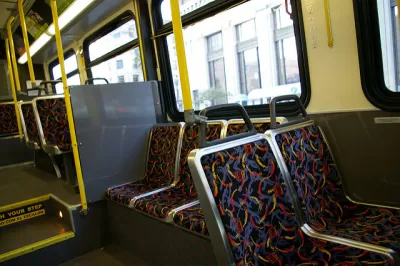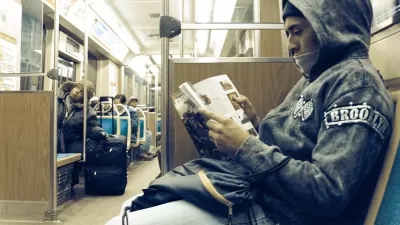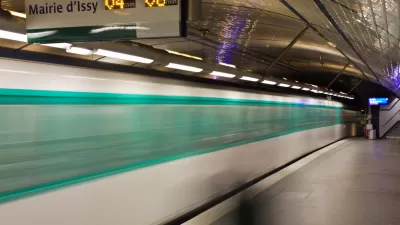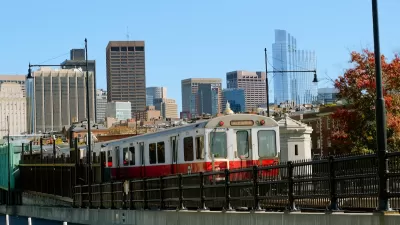This is definitely not a one-seat ride.

Feargus O'Sullivan presents a fascinating, and more than a little amusing, exploration of transit seat covers.
Here, O'Sullivan establishes the premise and drops one particularly large big vocabulary word:
It can’t be easy creating a good textile for public transit. Bus, train, and subway seats must do far more than look attractive. They have to stay fresh-looking as thousands of people sit on them daily, all the while trying to deter or mask the attentions of vandals. With all these boxes to tick, it’s no wonder that so many of the fabrics used on public transit are, quite frankly, pretty damned weird. Often the textiles chosen—usually, but not exclusively moquette—have an eye-grating brightness and busyness that would make the average person faint (or at least laugh) if they saw the same pattern used for a shirt or curtains.
People love their transit textiles, however, even if cloth isn't always the best choice for a transit seat. SO, the team at CityLab put together a transit seat cover ranking system considering the following:
- Memorability. They need to be striking enough to create an instant impression.
- Freshness. Moquette needs to be bright enough in color to appear new(ish) after years of wear, but not so pale as to make stains or fade evident.
- Intricacy. Large empty monochrome spaces show wear more quickly, and provide too tempting a canvas for vandals.
- Anti-Dazzle. Moquette shouldn’t be so bright and busy that it turns stomachs.
The resulting journey into transit fabrics travels from London to Turkey to Oslo and closer to home in Pittsburgh and Los Angeles.
FULL STORY: The Good, Bad, and Ugly Public Transit Seat Covers of the World

Maui's Vacation Rental Debate Turns Ugly
Verbal attacks, misinformation campaigns and fistfights plague a high-stakes debate to convert thousands of vacation rentals into long-term housing.

Planetizen Federal Action Tracker
A weekly monitor of how Trump’s orders and actions are impacting planners and planning in America.

In Urban Planning, AI Prompting Could be the New Design Thinking
Creativity has long been key to great urban design. What if we see AI as our new creative partner?

King County Supportive Housing Program Offers Hope for Unhoused Residents
The county is taking a ‘Housing First’ approach that prioritizes getting people into housing, then offering wraparound supportive services.

Researchers Use AI to Get Clearer Picture of US Housing
Analysts are using artificial intelligence to supercharge their research by allowing them to comb through data faster. Though these AI tools can be error prone, they save time and housing researchers are optimistic about the future.

Making Shared Micromobility More Inclusive
Cities and shared mobility system operators can do more to include people with disabilities in planning and operations, per a new report.
Urban Design for Planners 1: Software Tools
This six-course series explores essential urban design concepts using open source software and equips planners with the tools they need to participate fully in the urban design process.
Planning for Universal Design
Learn the tools for implementing Universal Design in planning regulations.
planning NEXT
Appalachian Highlands Housing Partners
Mpact (founded as Rail~Volution)
City of Camden Redevelopment Agency
City of Astoria
City of Portland
City of Laramie





























